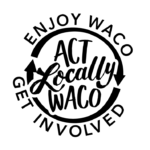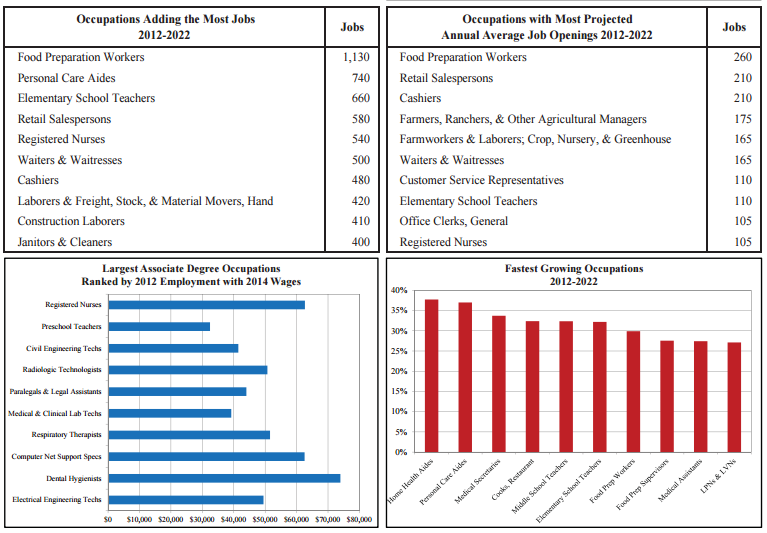by Alyssa Holloway
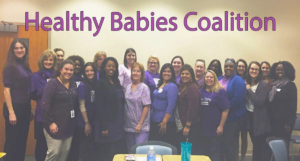 As one of the graduate assistants on the Healthy Babies Coalition in Waco, I have had the amazing opportunity of serving this growing community alongside organizations and agencies devoted to the health of women and children. These agencies truly make up the backbone of Waco. They work hard without the publicity, fame, or acknowledgment they deserve. The Healthy Babies Coalition started from the Healthy Texas Babies Initiative, an initiative of the Texas Department of State Health Services developed to help Texas communities lower their infant mortality rates. Waco is in the top 10% of highest infant mortality rates in Texas, and the Healthy Babies Coalition is determined to fight these terrible odds. Our community initiative includes partnering with agencies to create a plan for inter-conception health information to be provided to clients, encouraging the creation of a reproductive life plan with clients, as well as encouraging clients to see their physicians and enter in to early prenatal care.
As one of the graduate assistants on the Healthy Babies Coalition in Waco, I have had the amazing opportunity of serving this growing community alongside organizations and agencies devoted to the health of women and children. These agencies truly make up the backbone of Waco. They work hard without the publicity, fame, or acknowledgment they deserve. The Healthy Babies Coalition started from the Healthy Texas Babies Initiative, an initiative of the Texas Department of State Health Services developed to help Texas communities lower their infant mortality rates. Waco is in the top 10% of highest infant mortality rates in Texas, and the Healthy Babies Coalition is determined to fight these terrible odds. Our community initiative includes partnering with agencies to create a plan for inter-conception health information to be provided to clients, encouraging the creation of a reproductive life plan with clients, as well as encouraging clients to see their physicians and enter in to early prenatal care.
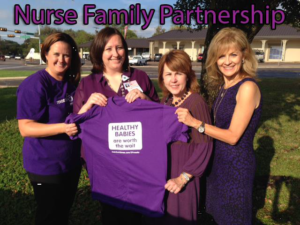 One of the members of the Healthy Babies Coalition working on these goals is Nurse Family Partnership (NFP). These loyal nurses of NFP are concerned above all about the relationships between mothers, children, and nurses. They are now performing home visits in Waco for first time mothers who qualify for these benefits. The goals of the partnership are to improve pregnancy outcomes, improve child health and cognitive development, and improve economic self-sufficiency. These nurses want to serve the moms and children of Waco in their home environments where they are the most comfortable. Not only does this eliminate the money and time of traveling for the new moms, but it also allows the nurses to teach and guide moms in an intimate setting through healthy pregnancies, labor, delivery, and motherhood.
One of the members of the Healthy Babies Coalition working on these goals is Nurse Family Partnership (NFP). These loyal nurses of NFP are concerned above all about the relationships between mothers, children, and nurses. They are now performing home visits in Waco for first time mothers who qualify for these benefits. The goals of the partnership are to improve pregnancy outcomes, improve child health and cognitive development, and improve economic self-sufficiency. These nurses want to serve the moms and children of Waco in their home environments where they are the most comfortable. Not only does this eliminate the money and time of traveling for the new moms, but it also allows the nurses to teach and guide moms in an intimate setting through healthy pregnancies, labor, delivery, and motherhood.
As a young mother, Andrea noticed that “There isn’t a class in school that tells you how to raise a kid. Nurse- Family Partnership is like an instruction book that gives you the knowledge and positive encouragement to raise a baby.”
Fathers are just as important as mothers in the pregnancy and child-rearing stages of life, and NFP honors the fathers of these families tremendously. Research shows that families who participate in NFP have a 68% increase in having a father in the household because this program knows the major benefits to fathers and children in that growing relationship.
As of this writing, the nurses in McLennan County plan to start visiting homes in January 2016. They are taking referrals for first time mothers who are due after March 10, 2016 and/or before the end of their 28th week of pregnancy. In addition, mothers must qualify for Medicaid or fall below 185% of the poverty line.
Nurse-Family Partnership of Waco is located at 120 Hillcrest Medical Boulevard #303, phone number 254-202-1130. Visit their website in English and Spanish at http://www.nursefamilypartnership.org/ to hear more personal stories and testimonies of the thankful mothers who have participated thus far and to connect with the program in Waco.
 Alyssa Holloway moved to Waco in August 2015 from Santa Barbara, California and loves her community. She is studying for her Masters in Social Work at Baylor University, and is working with the Healthy Babies Coalition at the Waco-McLennan County Public Health District. She enjoys baking, running, being outside, reading, laughing, going to church, and traveling.
Alyssa Holloway moved to Waco in August 2015 from Santa Barbara, California and loves her community. She is studying for her Masters in Social Work at Baylor University, and is working with the Healthy Babies Coalition at the Waco-McLennan County Public Health District. She enjoys baking, running, being outside, reading, laughing, going to church, and traveling.
The Act Locally Waco blog publishes posts with a connection to these aspirations for Waco. If you are interested in writing for the Act Locally Waco Blog, please email ashleyt@actlocallywaco.org for more information.
by Kayla Zollinger
Many people think of Communities In Schools of the Heart of Texas as a school based program where our staff are positioned at campuses throughout the Heart of Texas serving K-12. What many people do not realize is that CIS-HOT also serves youth and young adults who are often referred to as “opportunity youth.” Opportunity youth are typically defined as individuals 16-24 year-olds that are not working or in school. In partnership with Workforce Solutions for the Heart of Texas, CIS-HOT aims to connect with opportunity youth and work with them to achieve their education and employment goals.
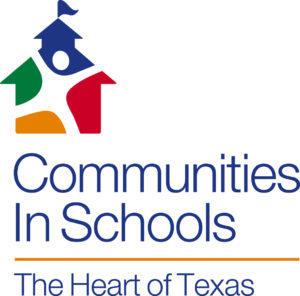 One of the opportunities offered to our 16-24 year olds participants is a Subsidized Work Experience. Through this experience, CIS-HOT hires youth, provides them with new-hire training, and places them in the community at a host-worksite. These host-worksites provide the youth with a job description, daily tasks, and supervise them for 15-20 hours per week for about ten weeks, or up to 300 hours. Youth participating in the Paid Work Experience Program receive an hourly wage paid by CIS-HOT as well as support from an individual Career Coach. Each Career Coach meets with the host employer and participant weekly to discuss the participant’s performance in order to highlight strengths and identify areas of growth to prepare them for future employment success.
One of the opportunities offered to our 16-24 year olds participants is a Subsidized Work Experience. Through this experience, CIS-HOT hires youth, provides them with new-hire training, and places them in the community at a host-worksite. These host-worksites provide the youth with a job description, daily tasks, and supervise them for 15-20 hours per week for about ten weeks, or up to 300 hours. Youth participating in the Paid Work Experience Program receive an hourly wage paid by CIS-HOT as well as support from an individual Career Coach. Each Career Coach meets with the host employer and participant weekly to discuss the participant’s performance in order to highlight strengths and identify areas of growth to prepare them for future employment success.
At CIS-HOT we find that so many of the youth entering our program have a strong desire to work, and want to learn to be reliable employees, but they often need the support of a caring adult to encourage and guide the learning of soft-skills. These youth and young adults are often juggling multiple responsibilities like working toward a GED, attending credit recovery classes, parenting, searching for employment, and even probation. This program offers them the opportunity to attend class, gain job skills, and earn a wage while being surrounded with the CIS-HOT community of support.
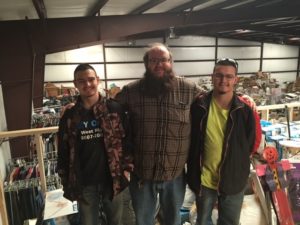 Through this program, we have seen numerous changes in our participants including higher self-esteem, more confidence, greater communication, increased punctuality, and improved initiative. Our team has found that this opportunity to learn, work, and earn a wage has kick-started the participants’ intrinsic drive to be successful. Many participants have now moved on to new permanent employment opportunities, using the work experience as an important resume item, and several have enrolled in post-secondary education. We have seen the work experience ignite confidence in youth and young adults and awaken the realization that their goals are within reach.
Through this program, we have seen numerous changes in our participants including higher self-esteem, more confidence, greater communication, increased punctuality, and improved initiative. Our team has found that this opportunity to learn, work, and earn a wage has kick-started the participants’ intrinsic drive to be successful. Many participants have now moved on to new permanent employment opportunities, using the work experience as an important resume item, and several have enrolled in post-secondary education. We have seen the work experience ignite confidence in youth and young adults and awaken the realization that their goals are within reach.
One of the most integral components of the Paid Work Experience Program at CIS-HOT is the support and investment in the lives of the youth participants by our host employers. Our host employers act as the main supervisors for the youth participants throughout their Work Experience. On a daily basis, these host employers offer professional advice to our participants, and thus doing, contribute to the successful future of these participants. Host employers can be from the public, private, or non-profit business sectors and have the opportunity to hire participants for any open positions following the completion of the Work Experience. Recently, we asked some of our host employers what they would say to other employers in the community about participating as a worksite and here is what they said:
“It is a great experience not only for the student, but also for the employer!”
“I’d say, ‘Do it!’ This program is fantastic for both the student and the employer. To be the first example and somewhat shape and improve a child’s future is an awesome feeling! Both participants walk away feeling accomplished. It’s a Win-Win situation!”
“The CIS Staff is great to work with, and very knowledgeable in what they are doing. The applicants they send us are wanting to change their circumstances.”
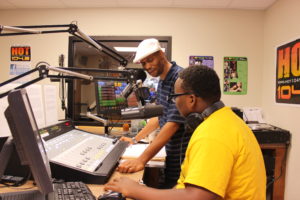 CIS-HOT is so thankful for the numerous employers who are currently hosting participants and who have acted as hosts in the past! You are truly valued and your investment in our youth and young adults will impact them for years to come!
CIS-HOT is so thankful for the numerous employers who are currently hosting participants and who have acted as hosts in the past! You are truly valued and your investment in our youth and young adults will impact them for years to come!
If you are interested in serving as a host employer for the Communities In Schools of the Heart of Texas Work Experience Program or if you would like to recommend a young adult to the program, please contact Kayla Zollinger.
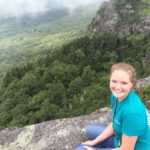 Kayla Zollinger is the Field Coordinator for the Workforce Innovation and Opportunity Act Program at Communities In Schools of the Heart of Texas. A resident of Waco since 2008, she has earned both a BBA, and an MSW from Baylor University. She is an avid Baylor Football fan with a passion for working with youth and young adults in her community. You can contact Kayla at 254-640-7299 or kzollinger@cis-hot.org.
Kayla Zollinger is the Field Coordinator for the Workforce Innovation and Opportunity Act Program at Communities In Schools of the Heart of Texas. A resident of Waco since 2008, she has earned both a BBA, and an MSW from Baylor University. She is an avid Baylor Football fan with a passion for working with youth and young adults in her community. You can contact Kayla at 254-640-7299 or kzollinger@cis-hot.org.
The Act Locally Waco blog publishes posts with a connection to these Aspirations for Waco. If you are interested in writing for the Act Locally Waco Blog, please email ashleyt@actlocallywaco.org for more information.
By Jennifer Alumbaugh, LMFT
I’ve had a few, what I like to call “Job years” in my life, those seasons when the hits just keep on coming and I’ve barely recovered my breath from one loss while I’m learning of the next one.
I had my first Job year when I was 8/9: my parents got divorced, my favorite kindred Aunt passed away, my childhood best friends and neighbors moved away, I moved to a new city and school, and my mother got remarried. That year—actually, that all occurred within a nine month span—left a lot of gaping holes in my 9 year old soul, and aged me a few decades as well.
I went to a support group for kids who experienced loss of a parent via death or divorce and met a friend with whom I became close and stayed friends over the years through high school and a while beyond. She had lost her father to cancer. We talked about loss and grief and connected over understanding the kinds of things at our age many other kids didn’t.
“Be with those who also are grieving. As you tell your stories, you will share an understanding of the heart that is deeper than words.” –Karen Katafiasz
After college I moved to Texas to be a foster mother at a youth ranch. For the first few months I lived in a staff house and was on a 4-day rotation in a house for middle-school age girls. Six months after I moved my life to Texas, I and a few other staff members lost everything in a fire that consumed our living quarters. It was a different kind of loss—of things, material possessions—no people were hurt or killed in the night time blaze. But it left a scar that I still feel today, when I forget and look for that one shawl my grandmother gave me, or those photos from college, or the first quilt I ever sewed. The Red Cross voucher couldn’t replace those things.
Six months after the fire, I was parenting in another home. This time on my own in a house of eight high school aged girls. The girls had just given me my first Mother’s day that Sunday, complete with wildflowers picked on the walk home from church and grilled cheese lunch they insisted on making me and hand written cards. May 15, 2002. Wednesday. Two of my girls and one of the boys from the other house borrowed a friend’s car, skipped afternoon classes, and drove into town. I was told they were going so fast they died on impact, in an instant. That weekend I buried three children in three days.
Last year, I lost several family relationships including contact with my young nieces and nephew who I came to Waco to help raise during my brother-in-law’s deployment. These bonds were severed due to the effects of my brother-in-law’s Narcissistic abuse and other toxic power and control dynamics among family members.
My life has been marked by some profound circumstances of loss and grief. While there have also been extraordinary joys and life scattered throughout, I began learning early on that there is no returning to the way things were, there is only moving forward, with the pain, to create a new normal.
“There will come a time to remind yourself of your reasons for living. You have a future worth enduring for, and you deserve to find a renewed sense of purpose and pleasure in your life.” –Karen Katafiasz
What that looks like is different for everyone. Around the world various cultures and beliefs have a vibrant array of ritual, ceremony, and celebrations to remember the dead, to honor those who have crossed over before the rest of us. For some, solace is found in spiritual practices and the comfort of faith beliefs and communities. For others, peace is sought in living out legacies of those passed on. Some grieve loudly, with wailing and heaving sobs unbridled. Others sit Shiva, quietly contemplating, in their homes. Some wear the clothes of mourning, muted solemn hues; others don vibrant colors celebrating lives lived, joys relished, with light and music and laughter.
 Some losses are private, secret, taboos whispered about in hushed tones and behind closed doors. Some losses are splattered across front-page news, a community outrage, a public nightmare unending. Some losses are respected, others are judged, some are shamed, others are “good-riddanced.” But every loss is someone’s. And I believe we must hold space for death—of a person, a relationship, a dream, a hope, a moment, a creature, an identity—in order to continue living.
Some losses are private, secret, taboos whispered about in hushed tones and behind closed doors. Some losses are splattered across front-page news, a community outrage, a public nightmare unending. Some losses are respected, others are judged, some are shamed, others are “good-riddanced.” But every loss is someone’s. And I believe we must hold space for death—of a person, a relationship, a dream, a hope, a moment, a creature, an identity—in order to continue living.
If you’re like me and you’ve survived a loss or three or many, you’ve also endured the onslaught of usually well-intentioned but so often hurtful sayings and prescriptions shared by those on the outside of our suffering. In retrospect I can appreciate their good intentions, but in the moment, those words strike as swift and deep as arrows and their aching effects can linger for a long while after.
The truth is, there is no right or appropriate way to move through our experiences. The process, as much as our experience, is unique to each of us. What resonates with one, rubs another uncomfortably. What nourishes one, may set back another. There is no timeline, no expiration date, no ordered and linear path out and past grief. We grow familiar with it. Accustomed to the weight and shape of it in our lives. And around this reality, we begin piecing together a new us, a new life, a new rhythm.
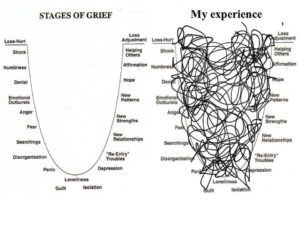 Elizabeth Kübler Ross gave us some language for discussing loss with her classic Five Stages of Grief (denial, anger, bargaining, depression, acceptance), yet many of us—professionally and personally—have come to realize that 1) there are many more than five parts and 2) they seem more like facets or stations at which one may visit multiple times along their journey through loss and grief. Personally, I find myself looking much more like the depiction on the right than any kind of neat, discernable, or graceful movement. (Picture source).
Elizabeth Kübler Ross gave us some language for discussing loss with her classic Five Stages of Grief (denial, anger, bargaining, depression, acceptance), yet many of us—professionally and personally—have come to realize that 1) there are many more than five parts and 2) they seem more like facets or stations at which one may visit multiple times along their journey through loss and grief. Personally, I find myself looking much more like the depiction on the right than any kind of neat, discernable, or graceful movement. (Picture source).
While there is no one formula for expressing grief, there are both healthy and unhelpful ways of coping with our feelings in the wake of loss. As a therapist, life coach, friend, and fellow mourner, I have sat with people of all ages, beliefs, cultures, and backgrounds through some of the darkest moments in life. I’ve sat with myself through them. In my experience, the most harm we can do is to ignore the feelings and to avoid talking about it. I know. It is scary and difficult and painful. Sometimes our losses shake and shatter everything we have come to believe, and in our grieving, we must rebuild what was razed to the ground.
I also know the beauty that can come from sharing the process with others—in therapy, in coaching sessions, in support groups, in creative outlets—we may find that in those moments when we feel we have been left with nothing, our words offer a light and a hope to another. And out of nothing, we find, a resilient something. There can be profound healing in a validating, “me too” of another sitting with us on our mourning bench. If you are finding yourself in this place, whether it is with a pastor, rabbi, elder, priest, counselor, life coach, friend, support group, mentor, therapist, or other trusted ally, I encourage you to seek the companionship of others along your journey through grief, loss, and finding a new normal. It is one path you don’t have to walk alone.
Resources:
- Holding Space – an ongoing, weekly grief and loss support group @ Enrichment Training & Counseling Solutions. Saturdays (March 5th) 10a-11:30am. Includes learning, creative projects, and guided discussion. Facilitated by Jennifer Alumbaugh, MS. Register here.
- GriefShare 12–week groups
- Providence Healthcare Network Support Groups
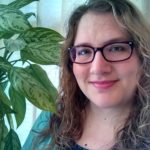 Jennifer Alumbaugh, MS is a Licensed Marriage and Family Therapist providing clinical and professional development consultation services at Enrichment Training and Counseling Solutions. She has extensive experience working with adolescent and adult survivors of psychological and spiritual abuse, trauma (sexual violence, childhood trauma, interpersonal violence); and complex PTSD. These, along with grief and loss work are her areas of specialization. Jennifer practiced as a mental health clinician throughout Los Angeles County working with children, youth, and their families from 2007-2012. In Central Texas, Jennifer has worked as a Site Coordinator with Communities in Schools of The Heart of Texas at G.W. Carver Middle School; as an independent consultant and professional development trainer; and conference speaker. In 2016 Jennifer created an implemented a therapeutic creative writing program, Brave Young Voices, at Klaras Center for Families and at the Texas Juvenile Justice Department correctional campus at Mart, TX. She may be reached at: jennifer@enrichmenttcs.com or 254-405-2496.
Jennifer Alumbaugh, MS is a Licensed Marriage and Family Therapist providing clinical and professional development consultation services at Enrichment Training and Counseling Solutions. She has extensive experience working with adolescent and adult survivors of psychological and spiritual abuse, trauma (sexual violence, childhood trauma, interpersonal violence); and complex PTSD. These, along with grief and loss work are her areas of specialization. Jennifer practiced as a mental health clinician throughout Los Angeles County working with children, youth, and their families from 2007-2012. In Central Texas, Jennifer has worked as a Site Coordinator with Communities in Schools of The Heart of Texas at G.W. Carver Middle School; as an independent consultant and professional development trainer; and conference speaker. In 2016 Jennifer created an implemented a therapeutic creative writing program, Brave Young Voices, at Klaras Center for Families and at the Texas Juvenile Justice Department correctional campus at Mart, TX. She may be reached at: jennifer@enrichmenttcs.com or 254-405-2496.
The Act Locally Waco blog publishes posts with a connection to these Aspirations for Waco. If you are interested in writing for the Act Locally Waco Blog, please email ashleyt@actlocallywaco.org for more information.
(Note: This is the first installment of what is intended to be an on-going series on financial literacy. Two of the Prosper Waco goals have to do with accumulating wealth: (1) Reduce the percentage of Waco-area households living without three months’ worth of savings if they were not able to work. (2) More than 50 percent of Waco households will have a net worth above $15,000. Our hope is that this series will help move our community towards accomplishing these goals both by sharing information about some of the challenges, complexities and practicalities of managing finances. — ABT)
by Phil Oliver
I write this blog NOT as a financial advisor but as a Financial Coach. The difference is not about money, but about relationships. As a coach over the past 8 years working with hundreds of individuals as well as churches and non-profits, I have observed many financial patterns both healthy and unhealthy that continue to impact valued relationships in peoples’ lives. Some of these patterns contribute to financial freedom, others to financial bondage. So, I offer to you in this blog series, my personal approach to helping promote financial freedom in our Waco community, as well as some of the observations, patterns, and choices I have seen that lead to financial freedom.
First, I must admit that this discussion will not simply be about money. Many components of a person’s ability to use money are bound and greatly impacted by the valued relationships in their lives. This is why I am a Coach and not an advisor.
The idea of living financially free is indeed a universal pursuit; however, successfully arriving there is highly complicated because it is not really a hunt for more but an understanding of contentment. This then gives birth to true freedom.
If I asked you, the reader, “How much money do you need to solve your financial issues?” No matter how the answer comes out verbally, it is usually summarized by, “just a little bit more.”
This answer is ultimately the telling symptom of our society.
Many believe that money is the complete answer to freedom and happiness, but I have found, and try to lead others to discover, that contentment with money is the real issue and that valued relationships drive that contentment impacting their finances on many levels. The guided pursuit of financial freedom then becomes a consideration, identification, and even discovery of patterns and choices in finances.
I have coached those are struggling just to make ends meet at or below the federal poverty, all the way to those who have substantial trust funds. The underlying reason for their financial frustration is…wait for it…they spend more than they make.
As a coach, I do not give financial advice, condemn, or convince. I simply listen to their financial goals and stories and then share information and patterns for them to consider.
I intentionally reframe the whole budget approach because most households who are struggling with finances…and life…don’t believe they have anything to “budget.” I call my approach for thinking about finances “FLOW.” My FLOW plan approach is totally dependent on the goal(s) that the person (and household) are committed to work toward to give them a sense of accomplishment with finances. I have consistently found agreement that they do have a FLOW of money and resources IN and OUT, and that right now something is NOT working for them.
My goal in a FLOW meeting is then to allow the “client” to authentically look at their FLOW and decide what they might want to change about their FLOW to achieve their current financial goal(s).
The entire process and conversation centers around the financial goal(s) for their household because of the relationships involved and the sacrifice that will be required of all participants once their REAL IN and REAL OUT is determined.
The secondary conversations occur after a deficit is found. This usually gives way to a discussion over personal spending habits and then moving to mutual sacrifice rather than simply self-sacrifice on the part of one individual. This is where EVERYONE in the household is encouraged to participate in the FLOW conversation and the process. I have found this to be critical for future success!
Finally, the goal-driven discussion will ultimately lead to possible changes and action steps that could be attempted or practiced based on past patterns and habits. I share my personal experiences, research, and experiences of many others to give each client ideas and reasonable steps to consider taking toward their financial goal(s). These self-determined changes then become the basis for their personal ACTION STEPS. I then continue the coaching by encouraging them to courageously practice these steps and let me know how they work——or don’t work. Both form the basis for continued, meaningful progress.
In my next blog, I will share how certain loans—payday loans, auto title loans, and even student loans—contribute to financial bondage for many in our Waco community.
 Phil Oliver is a retired educator. He is an independent Financial Coach, active mentor, and community activist. He has spent the last 8 years empowering individuals and families to take charge of their finances through his FLOW system. He is active in many community efforts to grow financial literacy and responsibility including Prosper Waco and Citizens for Responsible Lending. He consults with many local organizations to teach and inspire their efforts to empower clients in personal finances. You can contact him at: poliver254@hot.rr.com
Phil Oliver is a retired educator. He is an independent Financial Coach, active mentor, and community activist. He has spent the last 8 years empowering individuals and families to take charge of their finances through his FLOW system. He is active in many community efforts to grow financial literacy and responsibility including Prosper Waco and Citizens for Responsible Lending. He consults with many local organizations to teach and inspire their efforts to empower clients in personal finances. You can contact him at: poliver254@hot.rr.com
by Diego Loredo
Trying to decide what college to go is intimidating. While I was at A.J. Moore Academy, and later University High School, I never really thought about college and what I wanted to do with my life. It wasn’t until senior year that I actually started thinking about it.
Senior year was hectic, and it was hard for me to figure out what I wanted to do. My mind was filled with all kinds of things: paying senior dues, filling out scholarships, applying to colleges, and other things outside of school. I eventually decided that I wanted to major in journalism and be a news reporter. I’ve always kept up with the news and I loved to write so I figured it would be a good choice for me.
After I figured out my major, I ended up applying to three colleges: Texas State University, University of Texas at Arlington, and University of North Texas. UTA was originally my first choice and I was planning on visiting the campus, but then I found out about UNT Preview, which was scheduled for November. UNT Preview is an event that invites high school seniors to take a campus tour and explore the different facilities available at UNT. So I ended up going with my mom to take a campus tour. It was cold, but I fell in love with the campus and upon leaving I knew that UNT was the college for me.
For the rest of senior year, I was just preparing myself for freshman year. I filled out my FAFSA, I won the Brazos Education Foundation Scholarship, completed my dual credit courses, etc. Before I knew it, I graduated from UHS and was already starting my freshmen year at UNT. I ended up being roommates with a good friend of mine. That made it easier to get used to the fact that I was in college!
Freshman year flew by. I took mostly basics and journalism classes. I learned so many things about myself as freshman year went by. I made new friends, experienced new things, and have matured more. I ended up switching from news writing to public relations because I found out that news writing wasn’t really for me, despite being so excited for it in high school. Public relations is a lot more interesting to me, and to be honest I did it for the money.
Now I’m a sophomore living in an apartment with three other high school friends. I’ve taken numerous PR classes, I’m working with a nonprofit, and have been building up my resume to prepare me for after college. There’s only three more months before sophomore year ends, even though technically I’m a junior based on my credits. During the summer I plan on doing an internship, though I’m not sure where yet. My plan is to do an internship with FC Dallas, an MLS team that is offering summer internships for college students, but if that doesn’t work out then I will probably do an internship with a nonprofit in Denton or Waco.
Although it’s been an extremely bumpy road, I’m glad I chose UNT and I highly recommend it for anyone who wants to go to college. It’s great for journalism and PR students as well as for engineering and music. I’m continuing to learn new things as each new day passes by and I’m just trying to enjoy every little bit before I start my career in public relations.
 Diego Loredo is a sophomore at the University of North Texas. He is majoring in public relations. He graduated from University High School in 2014. Although he is still not quite sure what exactly he wants to do, he thinks he wants to work somewhere in sports PR (preferably soccer or college football). His hobbies include playing soccer and golf. He is 19 years old.
Diego Loredo is a sophomore at the University of North Texas. He is majoring in public relations. He graduated from University High School in 2014. Although he is still not quite sure what exactly he wants to do, he thinks he wants to work somewhere in sports PR (preferably soccer or college football). His hobbies include playing soccer and golf. He is 19 years old.
The Act Locally Waco blog publishes posts with a connection to these Aspirations for Waco. If you are interested in writing for the Act Locally Waco Blog, please email ashleyt@actlocallywaco.org for more information.
(The Heart of Texas P-20 Council includes representatives from K-12 education, higher education and employers. They meet regularly to help coordinate efforts to launch our young people into productive lives as workers and citizens. This post is one in a monthly series of posts intended to share information about the work of this important group in our community. For more posts in this series, click here: P-20 education.)
by Christine Holecek
What is Labor Market Information (LMI)? Some people believe the LMI is largely made-up information. But it is actually information that is pulled from premier data sites. National data is found at the bureau of labor and statistics http://www.bls.gov. State data is found through the Texas Workforce Commission, Tracer 2 website http://www.tracer2.com. Labor Market Information is broken down in codes. The industry codes are called NAICS, Occupational Codes are called SOC, and Training Codes are referred to as CIP.
NAICS, the North American Industry Classification System, is the standard used by Federal agencies in classifying businesses for collecting, analyzing, and publishing statistical data related to the U.S. business economy. SOC, Standard Occupation Classification – used by Federal agencies to classify workers into occupational categories for collecting, calculating, disseminating data. Workers are classified into one of over 820 occupations. Occupations are combined to form 23 major groups, 96 minor groups, and 449 broad occupations. Each broad occupation includes detailed occupation(s) requiring similar job duties, skills, education, or experience. CIP, Classification of Instructional Programs – used by the National Center for Education Statistics to collect, collate, analyze, and report full and complete statistics on the condition of education. The CIP functions as a taxonomic scheme to support the tracking, assessment, and reporting of fields of study and program completion activity.
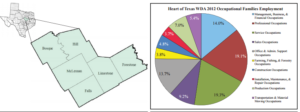 What does the demand for talent look like in the HOT Workforce Area? Waco is considered the Metropolitan Statistical Area for Heart of Texas (HOT) Workforce Solutions. LMCI analysts and users are particularly interested in K-12 educational programming because it is a pipeline to future employees. A list of targeted occupations can be found at http://www.yestoyouth.com/careers.html. Careers from Aviation to Welding can be found on the targeted occupation list. In demand career clusters include: Transportation, Manufacturing, Health Care, Business, Information Technology, Law and Public Safety. Below is the occupational projections from the Heart of Texas which can be found at http://www.tracer2.com/admin/uploadedPublications/2031_13_HeartOfTexas_2012-2022.pdf
What does the demand for talent look like in the HOT Workforce Area? Waco is considered the Metropolitan Statistical Area for Heart of Texas (HOT) Workforce Solutions. LMCI analysts and users are particularly interested in K-12 educational programming because it is a pipeline to future employees. A list of targeted occupations can be found at http://www.yestoyouth.com/careers.html. Careers from Aviation to Welding can be found on the targeted occupation list. In demand career clusters include: Transportation, Manufacturing, Health Care, Business, Information Technology, Law and Public Safety. Below is the occupational projections from the Heart of Texas which can be found at http://www.tracer2.com/admin/uploadedPublications/2031_13_HeartOfTexas_2012-2022.pdf
How does LMI meet the need of CTE Students? LMI Matters! It aims to help develop awareness of labor market information (LMI) and to show how it can be used effectively. It is for anyone who is helping adults or young people to explore opportunities for work or further learning. Our K-12 school system is training a future workforce that helps with the recruitment and retention of employers in our region. The HOT P-20 system includes pre-K through career as the pipeline of students that move on to post-secondary after high school graduation. The Greater Waco Chamber of Commerce has identified a talent pool of future employees and encourages training the following targeted industries: Advanced Manufacturing, Aerospace and Defense, Supply Chain Management, Health Care, Professional and Financial Services. Independent School Districts need to focus on the Labor Market Information and the targeted industries to ensure that we prepare our students today for jobs needed by tomorrow’s employers.
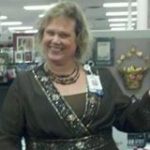 This Act Locally Waco blog post was written by Christine Holecek. Christine is an Education Specialist at Education Service Center Region 12 in Waco. She has worked in the area of Adult Education and Career & Technical Education for the past 25 years. She earned an AAS degree from MCC, a BAAS and Master’s Degree from the University of North Texas and is currently enrolled in the Doctoral Program in Educational Leadership and Policy Studies at Tarleton State University.
This Act Locally Waco blog post was written by Christine Holecek. Christine is an Education Specialist at Education Service Center Region 12 in Waco. She has worked in the area of Adult Education and Career & Technical Education for the past 25 years. She earned an AAS degree from MCC, a BAAS and Master’s Degree from the University of North Texas and is currently enrolled in the Doctoral Program in Educational Leadership and Policy Studies at Tarleton State University.
The Act Locally Waco blog publishes posts with a connection to these aspirations for Waco. If you are interested in writing for the Act Locally Waco Blog, please email ashleyt@actlocallywaco.org for more information.
by Victoria La Barre
I am a 2015 Waco High School graduate and Greater Waco Advanced Manufacturing Academy (GWAMA) alumna. GWAMA is a regional magnet program that provides classes in Welding, Robotics, and Precision Metal Manufacturing. Eleven surrounding school districts participate in the program. From my personal experience, GWAMA provides an amazing opportunity that opens many doors. As a member of the Robotics Academy, I worked through a rigorous curriculum that included electronics and robotics, multiple robotics competitions, and learning 3D printing software. I currently volunteer in the program as a mentor, tutor and instructional assistant.
GWAMA provides instruction that is geared toward hands-on learning styles which are more project-based rather than the regular old pencil, paper, and textbook approach. My senior project was the design and production of a 9-foot animatronic crocodile for Waco High’s production of Tarzan: The Disney Musical, which could snap its jaws and drive through the crowd during intermission.
After graduation, because of the hands on training and experience I received at GWAMA, I was immediately offered jobs at TSquared, Capstone Mechanical, Trane, Sonoco and VanTran. While most people my age were flipping burgers, I spent my summer working in the technical field participating in the manufacturing of high-powered transformers. This allowed me to see firsthand how members of a company team up to take an engineer’s blueprint and turn it into an actual working product. This summer job was a truly electrifying experience.
In my case, the open doors, didn’t stop there! Because of my experience working in 3D printing software, my first semester as a student at McLennan Community College, I was able to design and print a prosthetic leg for Bruno, a dog at the Humane Society. This project, and my previous experience with robotics at GWAMA, also positioned me for acceptance into the Mars Society as a member of crew 167B. This April, the Mars Society will take me and my Mars rover research project through an intensive Mars simulation in the desolate deserts of Utah. I have also been accepted as a NASA Community College Aerospace Scholar, and if my application is accepted, I plan to intern at SpaceX this summer.
 GWAMA isn’t only a fantastic program that helps jumpstart its students’ futures, but this program also has recently begun expanding its reach into the community. This past December, the Welding Academy created Star Wars inspired metal sculptures that were on public display at the Hippodrome while Star Wars: The Force Awakens showed at the theatre. GWAMA’s welders and members of the Precision Metal Manufacturing Academy also worked their magic to create the carriage for the musical production of Cinderella at University High School, and developed moveable props for the UHS Mighty Trojan Marching Band’s UIL show.
GWAMA isn’t only a fantastic program that helps jumpstart its students’ futures, but this program also has recently begun expanding its reach into the community. This past December, the Welding Academy created Star Wars inspired metal sculptures that were on public display at the Hippodrome while Star Wars: The Force Awakens showed at the theatre. GWAMA’s welders and members of the Precision Metal Manufacturing Academy also worked their magic to create the carriage for the musical production of Cinderella at University High School, and developed moveable props for the UHS Mighty Trojan Marching Band’s UIL show.
On the other side of the building, the Robotics Academy has introduced STEM (Science, Technology, Engineering and Math) to the next generation by mentoring a Lego-League robotics class in Indian Spring Middle School’s after school program. For older students interested in technology, high school girls are always welcome to join the Metallic Clouds, a Girl Scouts sponsored FIRST Robotics Competition team housed at GWAMA. (Contact Joe Rizo, Lead Robotics Mentor, at 512-787-3935 or at Joe_rizo@robotic-rulers.com for more information).
Perhaps the best part of GWAMA’s curriculum is its strong support of its students’ learning. No matter what kind of technology any student is interested in, be it welding, robotics, precision metal, or rocketry, GWAMA offers all its students after-school tutoring – even on Saturdays! GWAMA also highly encourages their students to participate in highly regarded competitions, such as BEST, VEX, FRC, FTC and SkillsUSA in order to buff up students’ resumes. Speaking of resumes, students receive one-on-one interview help and resume editing assistance in preparation for the annual career fair, where students have the opportunity to meet local employers in their respective fields.
All in all, GWAMA has provided a great opportunity for me and several other students from the local region to develop a skill set that prepares us for success in the workplace, and I’m sure the program will continue to inspire its students in the future. I encourage any high schooler to seriously consider joining this program, where the sky is not the limit – it’s the goal!
 Victoria La Barre loves robotics and has been on many teams. (BEST, VEX, FRC, FTC and Skills USA) She now mentors a Lego-League robotics team at Indian Springs middle school during their after-school program. She currently pursuing an electrical engineering associates degree at McLennan Community College and plans on either transferring to Texas A&M or Texas Tech University to continue a Masters degree. For more information about GWAMA, including information about how to apply, please visit the website: http://gwama.wacoisd.org/home/
Victoria La Barre loves robotics and has been on many teams. (BEST, VEX, FRC, FTC and Skills USA) She now mentors a Lego-League robotics team at Indian Springs middle school during their after-school program. She currently pursuing an electrical engineering associates degree at McLennan Community College and plans on either transferring to Texas A&M or Texas Tech University to continue a Masters degree. For more information about GWAMA, including information about how to apply, please visit the website: http://gwama.wacoisd.org/home/
The Act Locally Waco blog publishes posts with a connection to these Aspirations for Waco. If you are interested in writing for the Act Locally Waco Blog, please email ashleyt@actlocallywaco.org for more information.
by Saul Cornejo Bravo
Throughout history there have been many times when the youth, frustrated by issues affecting society, have rallied together to invoke change in our nation. In previous decades, those issues included civil rights, education, the Vietnam War, and free speech. What made the movements of these past generations successful was hope that change could be enacted and a willingness to use the collective power people hold in our democracy to achieve it. In contrast, our generation, the millennials, are currently described as too lazy, sensitive, safe-space-confined, selfie-obsessed, and self-absorbed to care about anything going on in the world. If judged by voting percentages of 18 to 29 year olds, that assertion might be correct. Millennials’ voting participation rate peaked in 2008, when 51% of the eligible voters from the youngest voting block participated that presidential election year. In contrast, during the last midterm election only about 21% voted. Because of this, politicians have had little incentive to act in our generation’s best interest. In particular, there is an urgent issue that I, along with the other members of the MCC Up to Us team, believe must be addressed because of its impact on our generation: the national debt. This debt issue threatens the future prosperity of our country and the future livelihood of young Americans through its effect on taxes, and federal spending.
The Up to Us team at McLennan College is running a national debt awareness campaign, as part of a national competition, in the hope that we can inform our peers about the issue and inspire them to take action by participating in the political process. Our campaign is non-partisan; we aren’t endorsing any political ideology, party, candidate, or even legislation. Instead, we believe this issue should transcend party lines and ideologies because Democrats and Republicans alike have gotten us to this point, and everyone will be affected by it, whether they consider themselves liberals or conservatives. Additionally, we do not want to promote intergenerational conflict, but we believe that our current political leaders, in regard to the national debt, are making decisions hurting our generations’ best interest, because the debt accumulated today will affect society tomorrow. Our main goal is to make our peers aware of the national debt and the importance of government fiscal responsibility, because our federal budget, apart from showing how we allocate our resources, demonstrates where our values and priorities lie.
After years of continued borrowing from the prosperity of future generations by running high federal budget deficits, the national debt is close to 19 trillion dollars. This debt accumulation trend, if left unaltered, could have negative consequences for our country. For example, in 2015 we spent approximately $224 billion in interest, more than we spend on education, research and development, and infrastructure– which are investments for our future– combined. Additionally, our annual interest payment is expected to more than double to $772 billion by 2025. Therefore, we must consider our priorities when thinking about increasing the national debt because we can’t fund the government through deficits indefinitely.
Currently, major drivers of the national debt are the national healthcare programs, but sadly there has been little done to make them sustainable. Over 40%, or about 1.8 trillion dollars, of our federal budget goes towards social health programs like Medicare, Social Security, and Medicaid, with costs growing every year. For example, due to the baby boomer generation retiring, Social Security and Medicare, in particular, have become extremely costly and are unsustainable under current law. In 1960, the worker to beneficiary ratio was 5 to 1. In 2009 it reached 3 to 1, and by 2035 it’s projected to reach 2 to 1, which will make Social Security an even bigger burden on our budget. Granted, these programs are important for our society, but if we want to continue having them, we need to make them sustainable in a way that won’t sacrifice the future of our country.
Our current political leaders are heavily divided among political parties and ideologies, and are unwilling to solve the issue. This led to a government shutdown in 2013 and inaction to reduce our budget deficits. Additionally, politicians from both sides of the aisle continue to irresponsibly propose plans that could have a significant negative effect on our deficit, such as heavily increasing spending or cutting taxes, the government’s revenue, by trillions. Proposals like this borrow from the prosperity of future generations for immediate political benefits. Therefore, it is up to millennials, the generation that in the future will suffer the consequences of the decisions made today, to demand action and hold our politicians accountable by participating in the voting process. By joining together now, we can cement our legacy as the generation that ensured America’s prosperity by demanding fiscal responsibility and ensuring our resources are spent investing in our future.
Follow the McLennan College Up to US campaign on Instagram @MCCUotoUs to learn more about the national debt and follow their campaign.
 Saul Cornejo Bravo is a student at McLennan Community College and currently interns at First Friday Waco. He is passionate about community development and plans to transfer to UT Austin and major in Economics.
Saul Cornejo Bravo is a student at McLennan Community College and currently interns at First Friday Waco. He is passionate about community development and plans to transfer to UT Austin and major in Economics.
The Act Locally Waco blog publishes posts with a connection to these Aspirations for Waco. If you are interested in writing for the Act Locally Waco Blog, please email ashleyt@actlocallywaco.org for more information.
Notes:
https://www.ssa.gov/history/ratios.html
https://www.ssa.gov/oact/trsum/
https://www.cbo.gov/topics/budget/long-term-budget-analysis
by Jenuine Poetess
 I recently purchased a couple of plain end tables to use in my new office. I got them for a great (read: cheap) price at a local discount home goods store but they lacked a certain…something. As I was looking at them, the thought occurred to me, “These would look awesome with mosaic tops.” My second thought was how daunting it might be to try to find all the supplies to accomplish my creative goal myself. Happily, my third thought was, “I wonder if I could take these to Practically Pikasso and mosaic them there?” So I called, and they said, “Sure, come on over!”
I recently purchased a couple of plain end tables to use in my new office. I got them for a great (read: cheap) price at a local discount home goods store but they lacked a certain…something. As I was looking at them, the thought occurred to me, “These would look awesome with mosaic tops.” My second thought was how daunting it might be to try to find all the supplies to accomplish my creative goal myself. Happily, my third thought was, “I wonder if I could take these to Practically Pikasso and mosaic them there?” So I called, and they said, “Sure, come on over!”
I was thrilled! For a mere $6.00 studio fee I began my project to turn these somewhat drab tables into something delightful.
 Before I continue, let me rewind and share a little back story. Practically Pikasso is, “an eclectic art studio” located in the shopping plaza at the intersection of Waco Drive and New Road. I have been there a few times before to paint pottery—which is one of their main offerings: a grand array of blank, white, ceramics in so many shapes and sizes ready for color and design. Their selection ranges from practical dishware, to specialty holiday décor, to character figurines, and intricate sculptures. There is no need to have any prior art experience, the knowledgeable and patient staff at Practically Pikasso will provide all the instructions, recommendations, and guidance needed to create your masterpiece! There is a vibrant array of ceramic glazes from which to choose including textured/flecked, smooth, and glass glazes in a rainbow of hues.
Before I continue, let me rewind and share a little back story. Practically Pikasso is, “an eclectic art studio” located in the shopping plaza at the intersection of Waco Drive and New Road. I have been there a few times before to paint pottery—which is one of their main offerings: a grand array of blank, white, ceramics in so many shapes and sizes ready for color and design. Their selection ranges from practical dishware, to specialty holiday décor, to character figurines, and intricate sculptures. There is no need to have any prior art experience, the knowledgeable and patient staff at Practically Pikasso will provide all the instructions, recommendations, and guidance needed to create your masterpiece! There is a vibrant array of ceramic glazes from which to choose including textured/flecked, smooth, and glass glazes in a rainbow of hues.
My mosaic project was divided into two segments over two days. Step one was to select my materials and create my desired design. There was a wide selection of materials to choose from including ceramic tiles of various shapes and sizes, glass beads, stained glass pieces, glass tiles, and mirror pieces. Once I determined my design—which took some time on my part to make sure that all the materials I was using would go together, had the same thickness so my finished table tops would be smooth and flat, and fit my design—then I needed to secure all the pieces onto my table top which I did with regular white craft glue (which dries clear). I also needed to be sure I left little channels between all my pieces where the grout would go in the second half of my project. The staff on duty during my first phase was helpful and patient with all my questions; he gave me excellent direction and assistance.
 I was excited to find the stained glass pieces among my options for mosaic. I have a special fondness for glass art as my grandmother was a stained glass artist. I also love how the pieces were swirled with a bit of white which yielded a lovely ocean and sky feel to me. I selected iridescent blue glass tiles for the outer border and then alternated iridescent glass with streaked stained glass in concentric squares. I was definitely channeling a beach vibe! With that, phase one was complete and I took the tables home to dry overnight.
I was excited to find the stained glass pieces among my options for mosaic. I have a special fondness for glass art as my grandmother was a stained glass artist. I also love how the pieces were swirled with a bit of white which yielded a lovely ocean and sky feel to me. I selected iridescent blue glass tiles for the outer border and then alternated iridescent glass with streaked stained glass in concentric squares. I was definitely channeling a beach vibe! With that, phase one was complete and I took the tables home to dry overnight.
 In addition to the pre-made ceramics to paint, Practically Pikasso also offers glass fusing, mosaic, and hand thrown pottery projects and classes. This unique art space is the perfect place to unwind after a stressful day, catch up with friends, enjoy a date night out, or relish some adult/child bonding time for parents, mentors, and relatives alike! No reservations are needed for individuals and small groups (2-4 people) but larger parties may want to call ahead to be sure there is enough space. Large groups may also reserve the special party space for after work art happy hours, birthdays, parties, showers, and other special occasions. Practically Pikasso hosts a number of group events such as Girl & Boy Scout troops, School art classes, Greek gatherings, Corporate Team Building/Staff Retreats and more—groups may reserve a spot on location or Practically Pikasso will come to you!
In addition to the pre-made ceramics to paint, Practically Pikasso also offers glass fusing, mosaic, and hand thrown pottery projects and classes. This unique art space is the perfect place to unwind after a stressful day, catch up with friends, enjoy a date night out, or relish some adult/child bonding time for parents, mentors, and relatives alike! No reservations are needed for individuals and small groups (2-4 people) but larger parties may want to call ahead to be sure there is enough space. Large groups may also reserve the special party space for after work art happy hours, birthdays, parties, showers, and other special occasions. Practically Pikasso hosts a number of group events such as Girl & Boy Scout troops, School art classes, Greek gatherings, Corporate Team Building/Staff Retreats and more—groups may reserve a spot on location or Practically Pikasso will come to you!
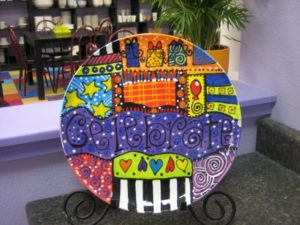 I was able to complete phase 2 of my project the next day after work. I brought my tables back to finish them with grout. I was able to choose from white, black, or grey grout. I went with the white to bring out the bright blues and mimic an island beach look. While I was grouting, I had the pleasure of meeting the owners, Marie and Russ. They hadn’t ever seen anyone bring in their own objects to mosaic so they were curious about my project. While I applied the grout across my project working it into every space and crevice, I asked Marie and Russ about how they came to own and run Practically Pikasso. Russ shared that as a medical practitioner he would often come to the studio to relax, unwind, and restore calm after particularly strenuous work days. He loved the atmosphere and ability to just sit down and begin working on a project. When the previous owner, Sam shared that she would be closing up shop, Russ began to consider the possibility of taking over the business. Both he and his niece shared a love for the place and didn’t want to risk losing such a treasure. After many conversations between Russ and Marie and Sam, they took the plunge and bought the business. They laughed as they shared the story with me—neither of them considered themselves artists or business owners both coming from medical professions. But they knew they wanted to preserve this space for the community and had the resources to do so.
I was able to complete phase 2 of my project the next day after work. I brought my tables back to finish them with grout. I was able to choose from white, black, or grey grout. I went with the white to bring out the bright blues and mimic an island beach look. While I was grouting, I had the pleasure of meeting the owners, Marie and Russ. They hadn’t ever seen anyone bring in their own objects to mosaic so they were curious about my project. While I applied the grout across my project working it into every space and crevice, I asked Marie and Russ about how they came to own and run Practically Pikasso. Russ shared that as a medical practitioner he would often come to the studio to relax, unwind, and restore calm after particularly strenuous work days. He loved the atmosphere and ability to just sit down and begin working on a project. When the previous owner, Sam shared that she would be closing up shop, Russ began to consider the possibility of taking over the business. Both he and his niece shared a love for the place and didn’t want to risk losing such a treasure. After many conversations between Russ and Marie and Sam, they took the plunge and bought the business. They laughed as they shared the story with me—neither of them considered themselves artists or business owners both coming from medical professions. But they knew they wanted to preserve this space for the community and had the resources to do so.
Since they have taken over the business, they have added many shelves of ceramic selections to choose from as well as the other kinds of projects. Russ noted that one of the things he loves best is seeing people engage with each other,
“They come in and all the phones and devices stay put away. Here they talk together, laugh, share an experience with each other and in the end, have an art object they made to remember the occasion. I love seeing people slow down and reconnect here.”
Marie shared how after a long career in nursing, she loves the positive atmosphere and creating that happens. While she enjoyed the work she did as a nurse, she reflected that there are far fewer dangers and much more joy in this work adding, “and it really is relaxing—a kind of therapeutic or meditative activity.”
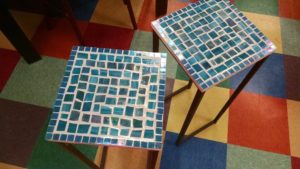 The exciting thing about mosaic work is the dramatic reveal. After all the grout has been filled my pieces looked quite the mess. Basically as though I had just smeared frosting all over my tables. My favorite part came next: cleaning off the tiles and smoothing the grout to reveal the sparkling finished project!
The exciting thing about mosaic work is the dramatic reveal. After all the grout has been filled my pieces looked quite the mess. Basically as though I had just smeared frosting all over my tables. My favorite part came next: cleaning off the tiles and smoothing the grout to reveal the sparkling finished project!
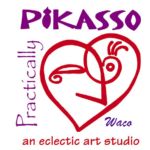 Practically Pikasso is the only art space of its kind here in Waco and offers a much wider selection of items than many other studios in cities around Central Texas. Whether you’re looking for a fresh option to get together with friends, or you need a creative place to refresh on your own, check out what Practically Pikasso has to offer. They have a selection of Valentine’s Day themed pieces available this month just for you!
Practically Pikasso is the only art space of its kind here in Waco and offers a much wider selection of items than many other studios in cities around Central Texas. Whether you’re looking for a fresh option to get together with friends, or you need a creative place to refresh on your own, check out what Practically Pikasso has to offer. They have a selection of Valentine’s Day themed pieces available this month just for you!
- Summer Kamp Classes for ages 6 and older: consider sending your creative ones to Kamp at Practically Pikasso this summer! With 8 sessions to choose from with different themes, there is sure to be something for everyone.
- Mosaic Mondays: enjoy 10% off all mosaic projects every Monday
- Tuesday Fuseday: enjoy 10% off all glass fusing projects every Tuesday
- Wednesday Ladies Night: ladies enjoy $2 off regular studio fees all Wednesday night
- Open Weekends! not free during the weekday? Come hang out on a Saturday or Sunday afternoon. Enjoy the music, and create something wonderful!
 Jenuine Poetess is an artist, visionary, and community organizer. In 2010, she founded In the Words of Womyn (ITWOW), an international, grass-roots, written and spoken-word arts project with chapters throughout Los Angeles, CA; Waco, TX; and Lebanon. Jenuine is the founder of Waco Poets Society and co-founder of the Central Texas Artist Collective. She writes, organizes, and creates rooted in the fierce conviction that holding intentional space, access, and opportunity for all people to foster their creative health is a matter of justice and is a vital asset to the sustainable thriving of communities. She currently lives and poems in Central Texas where she enjoys finding new ways to disrupt the homeostasis of her city. You can contact her at: jenuinepoetess@gmail.com.
Jenuine Poetess is an artist, visionary, and community organizer. In 2010, she founded In the Words of Womyn (ITWOW), an international, grass-roots, written and spoken-word arts project with chapters throughout Los Angeles, CA; Waco, TX; and Lebanon. Jenuine is the founder of Waco Poets Society and co-founder of the Central Texas Artist Collective. She writes, organizes, and creates rooted in the fierce conviction that holding intentional space, access, and opportunity for all people to foster their creative health is a matter of justice and is a vital asset to the sustainable thriving of communities. She currently lives and poems in Central Texas where she enjoys finding new ways to disrupt the homeostasis of her city. You can contact her at: jenuinepoetess@gmail.com.
The Act Locally Waco blog publishes posts with a connection to these aspirations for Waco. If you are interested in writing for the Act Locally Waco Blog, please email ashleyt@actlocallywaco.org for more information.
by Natalie James
About Project Link
Three years ago, the Bernard and Audre Rapoport Foundation, under the leadership of Executive Director Tom Stanton, began exploring ways to increase the rate of post-secondary success for Waco-area high school and college students. Over the course of many months, a group of about 40 individuals from local school districts and colleges (including school counselors, administrators, superintendents, and college presidents) assembled to discuss the challenges and barriers their students faced with college readiness, high school transition to college, and college success.
The result? After much collaboration and continued conversations, the group proposed to increase the number of counselors available to students at both the high school and college level so that students could receive consistent support for post-secondary success from ninth grade all the way through college or technical certification. This additional counseling would provide the “link” between success in high school and success in post-secondary studies.
In January 2015, The Bernard and Audre Rapoport Foundation Board approved the grant proposal for Project Link in the amount of $1,020,000. Prosper Waco serves as Project Link’s “backbone organization.” They work with the multiple organizations involved in the grant to provide oversight of the project’s implementation, including collecting data, tracking outcomes, and reporting to the Rapoport Foundation.
Project Link officially launched this past fall to help students from La Vega High School, University High School, McLennan Community College and Texas State Technical College. The project link team consists of one Project Link Coordinator, three Project Link High School Liaisons, and one Project Link Outreach Specialist. The Project Link Coordinator serves as the team’s lead and manages grant operations on a day-to-day basis. Three Project Link Liaisons, one at La Vega High School and two at University High School, work with students in the ninth through twelfth grade to prepare for college and workforce opportunities. The Project Link Coordinator and Outreach Specialist work together with the high school Liaisons to ensure a smooth transition to college and to provide continued support for Project Link students at the college level. Our team includes me as the Project Link Coordinator at McLennan Community College; Brandon Chappell, Project Link Outreach Specialist at Texas State Technical College; LaTishia Watson, Project Link Liaison at La Vega High School; and Marlayna Botello and Brittany Davis, Project Link Liaisons at University High School.
So what exactly do we do?
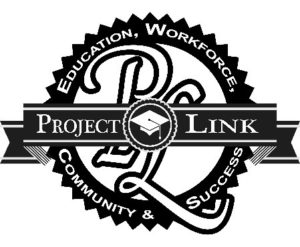 The goal of Project Link is to help students and their families chart a more assured and successful post-secondary journey. To accomplish this, Project Link participants develop personal relationships with professionals who provide intense one-on-one college, career, and financial advising and mentoring.
The goal of Project Link is to help students and their families chart a more assured and successful post-secondary journey. To accomplish this, Project Link participants develop personal relationships with professionals who provide intense one-on-one college, career, and financial advising and mentoring.
Really…who wouldn’t like having someone they can go to when they are unsure of what their next step is or when they need reassurance that they are on the right track? At both the high school and college level, Project Link provides academic and college support as well as personal and life coaching.
At the high schools, the Project Link team works to create a college-going culture by developing an environment that recognizes the value of higher education, by building awareness of post-secondary resources, and by nurturing student’s individual college and career aspirations. The participating high schools each have a dedicated space where the student can come to learn, explore, and begin to outline their own college and career path with the appropriate support and guidance to do so. Through one-on-one meetings and group sessions, the high school Liaisons help students with planning for optimum college and career readiness. They help students determine their career and college goals, think about enrichment and extracurricular engagement, figure out how to afford college and manage their money, navigate the application and registration process, prepare for SAT/ACT/TSI tests, and transition from their high school to the college of their choice. We encourage and support students as they explore and find a college that best meets their academic and career goals, and their personal needs – their true college match.
Project Link students participate in college and career nights, college application fairs, financial aid and scholarship application workshops, college tours, career days, and more. The students work on building their own educational resume by developing strong academic competencies and by participating in leadership and community service opportunities. College representatives from MCC, TSTC, and Baylor provide site visits for one-on-one advising for students who are considering attending one of these local post-secondary institutions.
Project Link is not designed to recruit specifically for MCC or TSTC, but statistically we know that many of our students for various reasons end up matriculating to one of those, so we provide additional support at those two schools.
At the college level, the Project Link Outreach Specialists provide one-on-one advising, life coaching, and other services. Students have the opportunity to participate in workshops that cover topics such as academic skills and support, careers, degrees, employability, life skills, personal wellness, computer and technology skills, and financial literacy and resources. Participants have additional opportunities to build their educational resume through community service, leadership, and internship opportunities. The goal of all of this is to help students develop the needed academic competencies, life skills, and strategies to attain their personal goals like earning their college degree, landing the job of their dreams, and achieving lifelong success.
Overall, Project Link helps to increase awareness, access and success for college readiness and retention. While building long lasting growth-oriented relationships with our students, the program allows each student to not only dream, but to make those dreams come true. At the end of the day, our program is not designed to do things for them, but instead to provide them with guidance and understanding about what steps they can make next in reaching their own dream, their own success. We can provide each of these students with all the knowledge, insight and information we have about pursuing a college or workforce degree that will land them the job of their dreams, but in the end, ultimately, we will not be the ones who will make these students successful. THEY WILL. Their persistence and hard work will be what takes them to their desired level of success. We are just serving as a beacon of light, showing them that with an advanced EDUCATION, comes great WORKFORCE and career opportunities that will lead them to be more productive members of our society and COMMUNITY. I would say that is a win, a victory, a SUCCESS for us all.
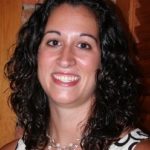 Natalie James is the Coordinator for Project Link. A native of the Waco area, she has proudly worked in Higher Education for the past 10 years at McLennan Community College. She earned her AA degree from MCC, a BSAS degree from Tarleton State University through the MCC University Center, and M.Ed. from Angelo State University. She is also a proud wife and mother to two amazing daughters. If you have questions about Project Link, feel free to contact Natalie at njames@mclennan.edu or at 254-299-8517.
Natalie James is the Coordinator for Project Link. A native of the Waco area, she has proudly worked in Higher Education for the past 10 years at McLennan Community College. She earned her AA degree from MCC, a BSAS degree from Tarleton State University through the MCC University Center, and M.Ed. from Angelo State University. She is also a proud wife and mother to two amazing daughters. If you have questions about Project Link, feel free to contact Natalie at njames@mclennan.edu or at 254-299-8517.
